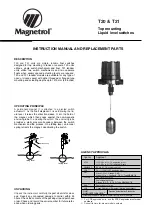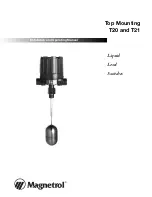
FabricPath links (
switchport mode fabricpath
) carry VN-Segment tagged frames for VLANs that have VNIs
defined. These are the VN-Segment core ports.
Figure 25: VN-Segment and FabricPath
The previous figure shows a typical Cisco FabricPath network. Switches S1 and S2 are the spine switches.
Switches S3 and S4 are the leaf switches and are connected to the spines over FabricPath interfaces. The
VN-Segment feature is enabled on all leaf switches.
Server A is connected to leaf switch S3 and server B is connected to leaf switch S4 through normal Layer 2
trunk/access ports. These interfaces are also referred to as the "VNSeg Edge" ports. The servers send and
receive traditional .1Q tagged or untagged frames. No new configurations are needed on the servers. The
spines forward the VN-Segment tagged frames to the intended leafs.
Assume that servers A and B need to be in the same Layer 2 flood domain.
On the leaf switches, VLAN 333 is mapped to an available VN-Segment ID 16535. This VN-Segment ID
identifies the VLAN 333 on the FabricPath network.
Here is a typical packet flow:
1
A data packet from server A to server B tagged with VLAN 333 is received on the VNSEG port of S3.
2
S3 does the packet lookup and sends the packet on the FabricPath port towards the spine. The switch S3
uses the VN-Segment ID corresponding to the VLAN.
3
S1 and S2 performs FabricPath forwarding towards the intended leafs.
Cisco Nexus 6000 Series NX-OS Layer 2 Switching Configuration Guide, Release 7.x
204
Configuring VN-Segment
Information About VN-Segment










































